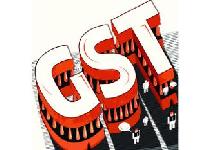
The GST as a mega reform step has entered into the next phase. Here, after getting ratification from 50% of the states, the GST Council has to decide the GST rates and the rates of State GST (SGST), Central GST (CGST) and IGST (Integrated GST).
Now, a heated argument is going on among policy makers, economists, political parties and between the center and the states about the standard GST rate. The standard GST rate is that rate to be imposed on bulk of the commodities. Thus the standard GST rate will decide the revenue from the tax, tax burden on the public etc.
Already there is consensus that there can be three GST rates- the standard rate, rate on merit goods or goods that are essential items (low tax rate) and a higher tax rate on non-merit goods like goods for conspicuous consumption.
Standard GST rates as per the GST Council decision
The GST Council has adopted two standard GST rates – 12% and 18%. Altogether the new GST rate structure has four rates – 5%, 12%, 18% and 28%.
What should be the qualities of the standard GST rate?
The standard GST rate should be a revenue neutral one (RNR) implying that tax revenue should not increase or decrease after introducing this rate for both the centre and states.
Second is that there should not be any inflationary pressure because of the tax burden. Higher the GST rate, higher will be the inflationary impact.
Thirdly, states fear that if the rate is lower (they say below 20%), state’s tax revenue may fall.
Another warning about a higher GST rate is that it may encourage tax evasion.
How can set a standard GST rate?
There is a guide for formation of the standard GST rate. First one is the prevailing tax rates. Basically, GST is going to replace two major taxes on goods – the Union excise duties and state sales taxes or VAT. The central government’s Union Excise Duty has a standard rate of 14%. State’s sales taxes are charged at 12.5% for most commodities. This means that the new GST rate can be near to 26.5%. Besides these, there were many other small taxes like Central Sales Taxes, Octroi etc. Totally, the existing tax impact may range between 27 to 30% for most of the goods.
Existing proposals
Given this existing taxes, over the last one year, experts/ committees have made suggestions about the standard GST rate.
Interestingly, each committee and experts have suggested different rates from 12% to 27%.
National Institute for Public Finance and Policy (NIPFP) suggested a 27% standard GST rate. This rate comprised of a state GST rate of 13.91% and Central GST of 12.77%. We should remember that the GST though a single tax (say, 27%) has two components – the state GST and central GST.
But this was rated as very high by many including the Finance Minister Arun Jaitely. Such a high rate will jeopardize the purpose of GST itself – bring down the rates and promote economic activities. Similarly, international comparisons show that only few countries like Sweden and Denmark have such a high level of GST rate. Most countries have a rate of around 20%.
An alternative suggestion was made by Arvind Subramanian Panel (Report on the Revenue Neutral Rate and Structure of Rates for the Goods and Services Tax). The government appointed panel suggested a GST rate of 18%; a much lower one compared to the NIPFP rate. But here, the states disagreed as the rate is too low for them and may led to revenue loss.
States are demanding a standard tax rate of above 20%. Such a rate, according to them, will be enough to protect their tax revenue share.
Later, the NIPFP has revised its standard revenue-neutral GST rate to range of 23-25%.
Vivek Mishra, leader, international tax, PWC India, believes an RNR lower than 25 per cent could lead to revenue loss.
Govinda Rao, former director of NIPFP, said that what is important is revenue and if the rate is fixed at 20 per cent — half each of CGST and SGST, that will be the best option.
In July 2010, the government had suggested a standard rate for goods at 20 per cent (10 per cent each for the Centre and the states), a lower rate of goods at 12 per cent (6+6) and 16 per cent (8+8) for services. A select Committee of the Rajaya Sabha also suggested the rate of 20%.
For services, the existing tax rate is 15%. Any tax rate well above this rate will be a serious distortion. For example, a common GST rate of 23% (for both on goods and services) will be quite high for services. Services tax (GST) is also to be shared by the states and the centre by having a state GST and central GST within the single GST rate. Given the present rate of 15% and the big difference with the proposed standard rates above 20%, there is a demand for a separate GST on services which will be lower compared to goods GST.
All these indicate that determining the standard GST rate will be an important task for the GST Council. The standard rate should be revenue neutral, comfortable for the states, non-inflationary etc.
*********









